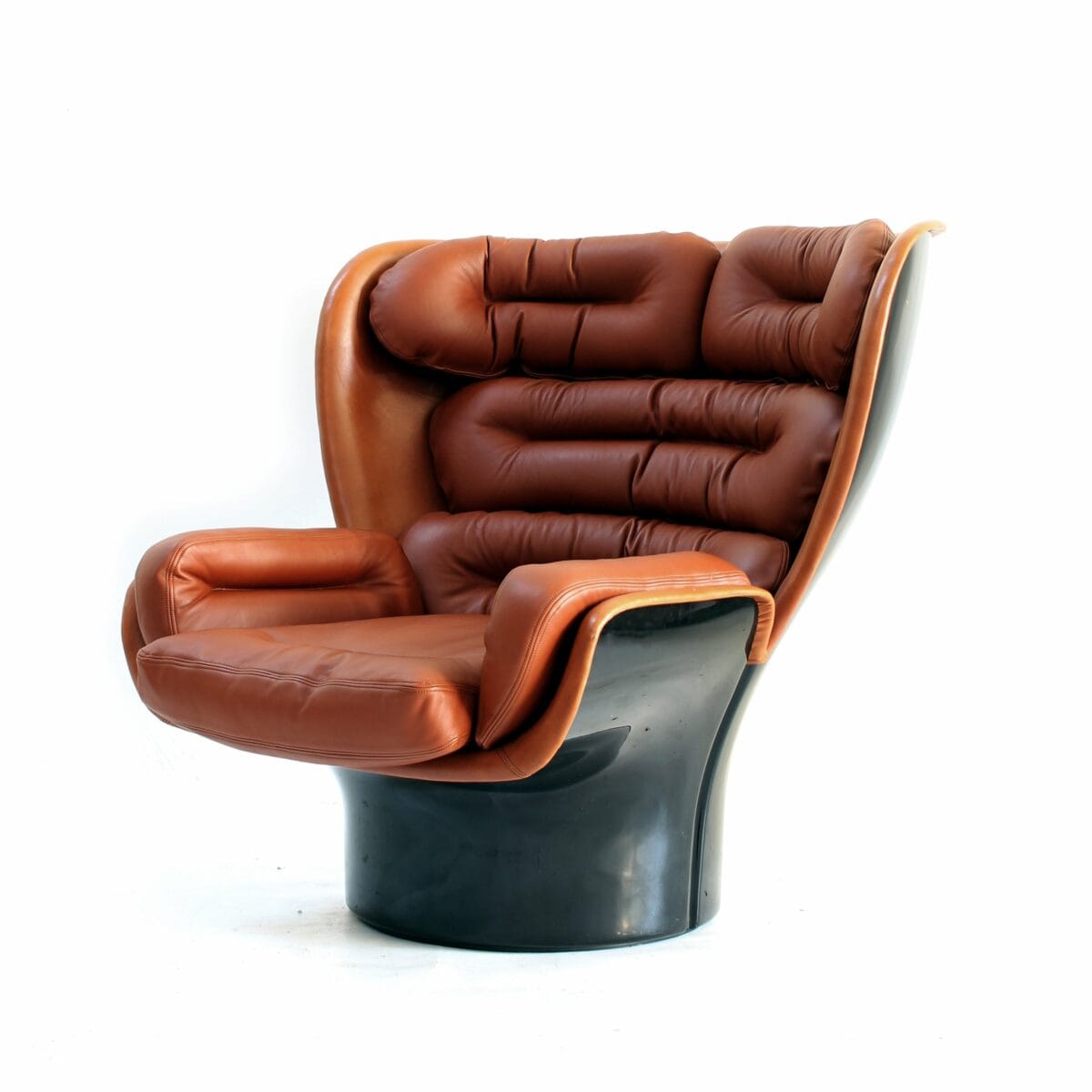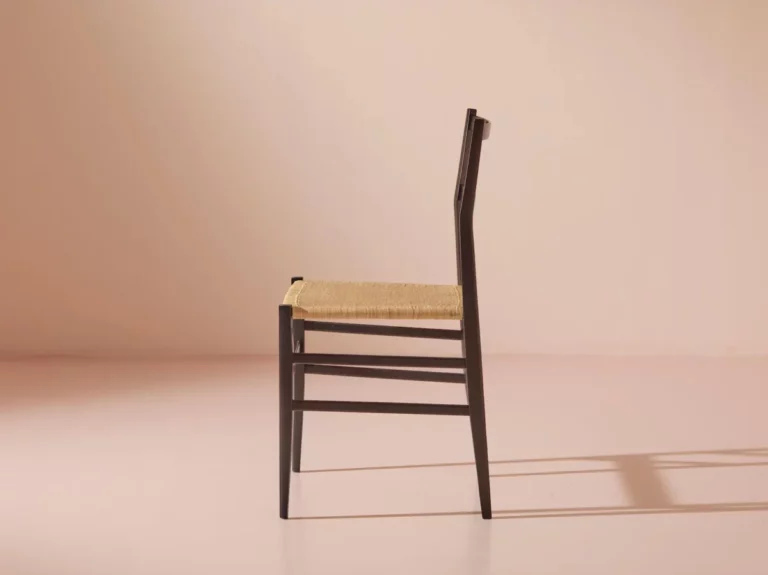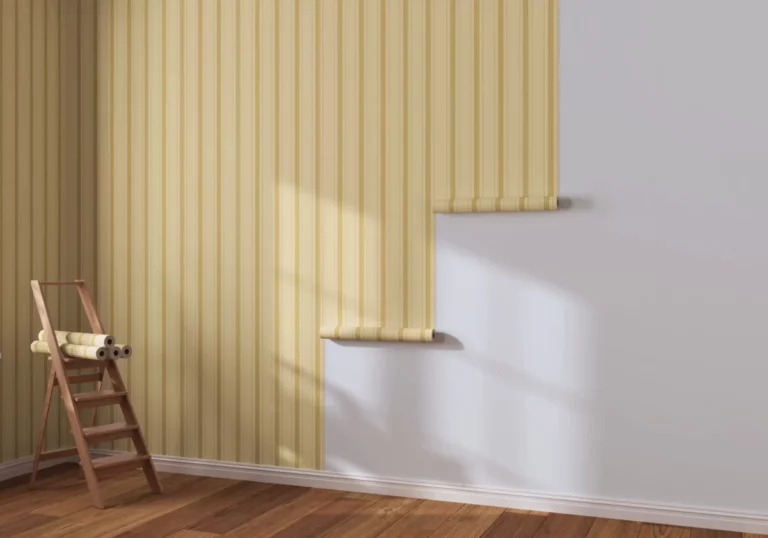Joe Colombo Design: Let’s get modular !
A true star designer of the 60s, Joseph “Joe” Colombo was one of the most innovative Italian designers of the 20th century. Despite a career cut short by his death at the age of 41, he left a profound imprint on the history of contemporary design. Through his radically futuristic approach, modular furniture and integrated living projects, Joe Colombo redefined domestic space. Today, he is regarded as one of the pioneers of total design, a creator of worlds where people, furniture and…
A multidisciplinary artistic journey
Born in Milan in 1930, Joe Colombo studied first at theBrera Academy of Fine Arts, then at the architecture faculty of Milan’s Politecnico. He started out as an abstract expressionist painter, then sculptor, before turning to industrial design in the early 1960s. This cross-disciplinary artistic training infuses all his work: for Colombo, furniture is conceived as a functional sculpture, a free volume in space.
In 1962, he founded his own studio in Milan, at the height of the Italian design boom. In the context of the 60s, marked by the hippie and pop movements, the consumer explosion, the conquest of space and new technologies, Colombo embodied a utopian generation. His work is part of a critical trend in functional modernism: he wants to go beyond fixed furniture and invent evolving environments.
A revolutionary vision of living
Joe Colombo sees furniture not as an end in itself, but as an integral part of an overall living system. He creates flexible “living units” – modular cells capable of meeting all the needs of modern man. For him, domestic space must be fluid, mobile, transformable according to use and time of day.
“All furniture must be able to move in space.” – Joe Colombo
Hiscellular habitat concepts include a night cell, a bath cell, a kitchen cell and a multifunctional central unit. These projects, such as Rotoliving (1969) and Visiona 1 (1970), are part of a profound reflection on the habitat of the future – compact, autonomous, connected, almost spatial. This visionary thinking prefigures contemporary micro-apartments, tiny-houses and modular units.
Emblematic designs from the 60s and 70s
Elda (1963)
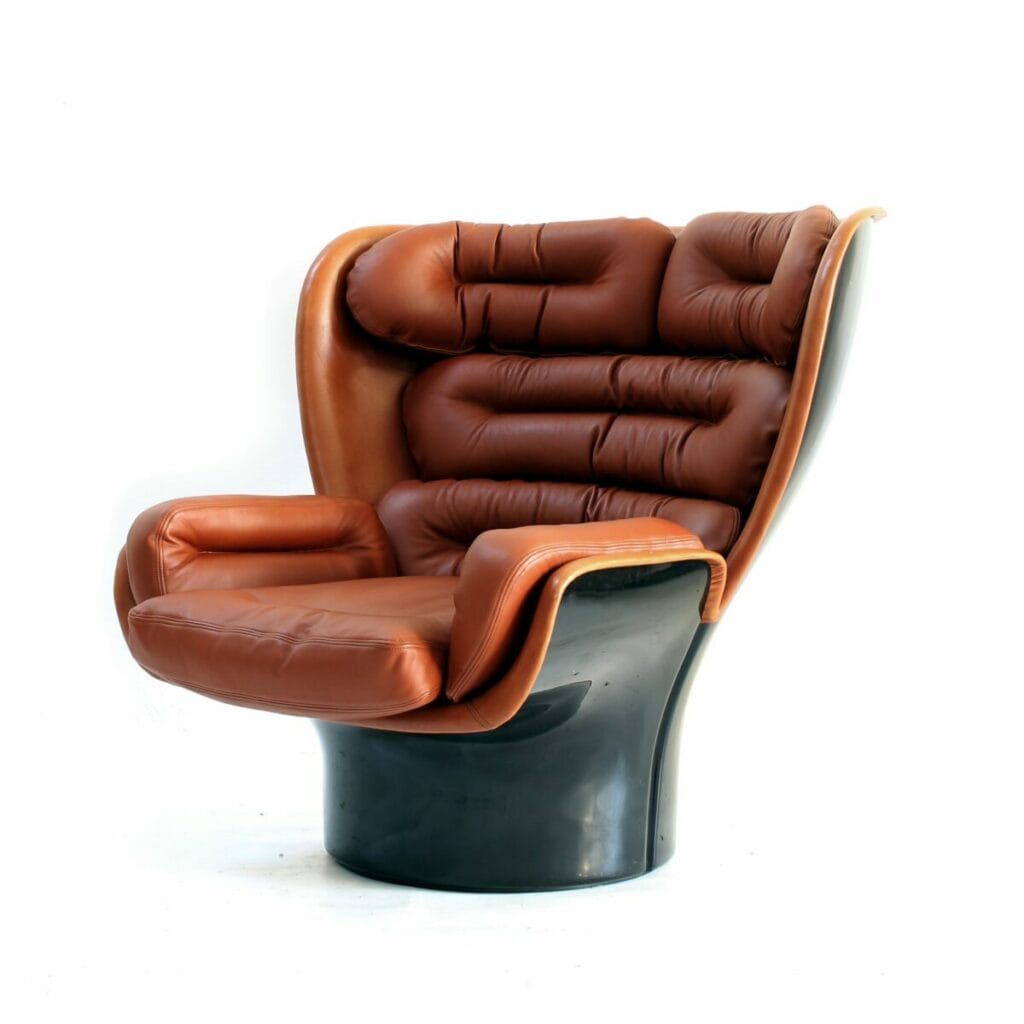
nspired by his wife’s name, the Elda armchair is an iconic piece of organic design. It features a self-supporting fiberglass structure, a technical feat for its time, and is upholstered with enveloping leather cushions. Its high, curved back insulates and protects, creating a bubble of comfort. It is now on display at the Vitra Design Museum.
Combi-Center (1963)
With the Combi-Center, Colombo invents a totally flexible storage unit. Cylindrical and mounted on castors, it no longer leans against the wall, but stands in the center of the living room like a multifunctional sculpture. Whether bookcase, bar, hi-fi unit or pocket divider, each rotating cylinder can be freely arranged, transforming the user into the actor of his interior design.
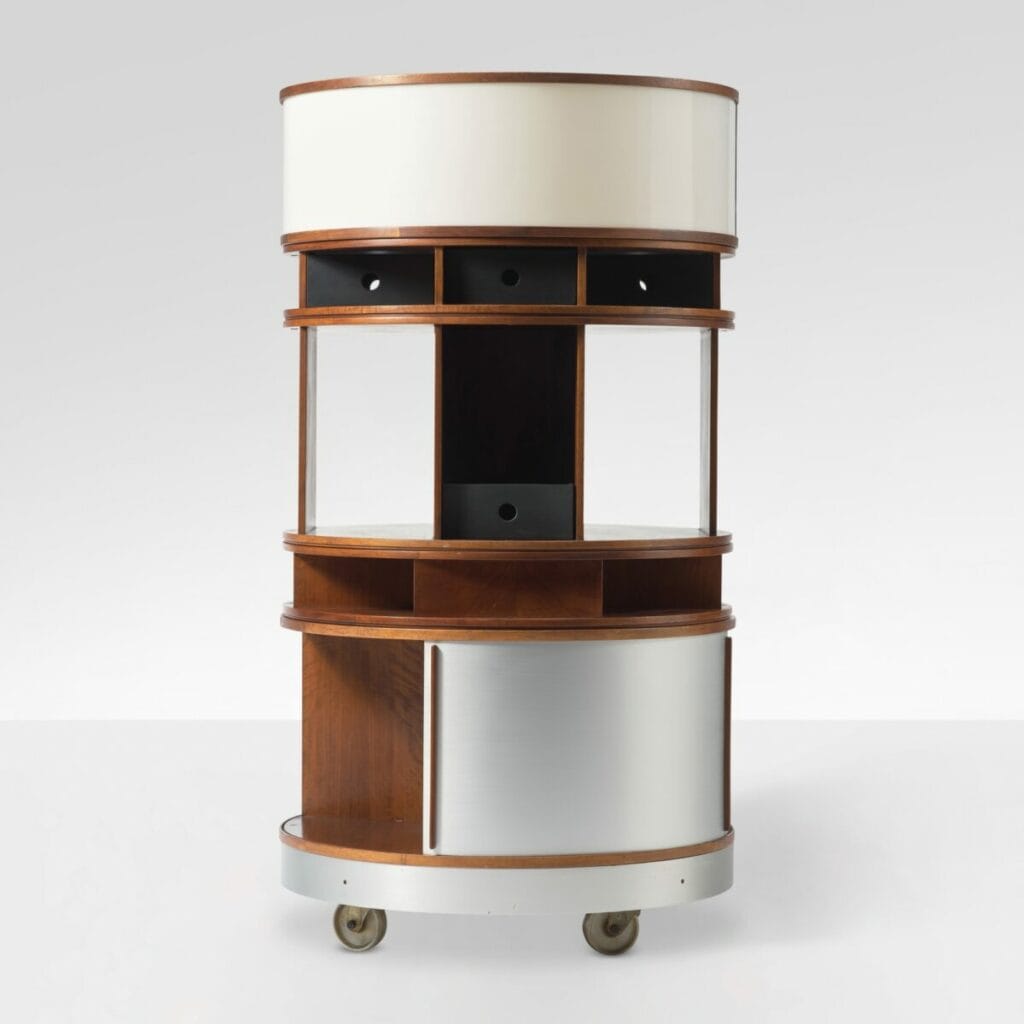
Mini-Kitchen (1963-65)
This project condenses an entire kitchen into a single mobile cart: cooktop, refrigerator, drawers, storage space, electrical outlets and pull-out worktop. A veritable concentrate of domestic intelligence, the Mini-Kitchen is the very embodiment of Colombo’s thinking: a compact, modular, mobile design, conceived for autonomy.
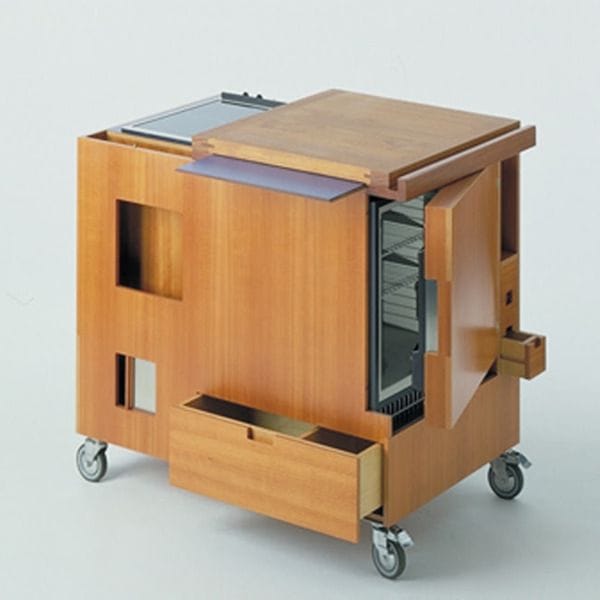
Superleggera Chair (1964)
This lightweight armchair in curved walnut, upholstered in leather, combines ergonomics with refined craftsmanship. Featuring a polyurethane foam cushion, it disperses body weight evenly. Every seam is hand-sewn. It’s a manifesto of modern comfort and sculptural aesthetics.
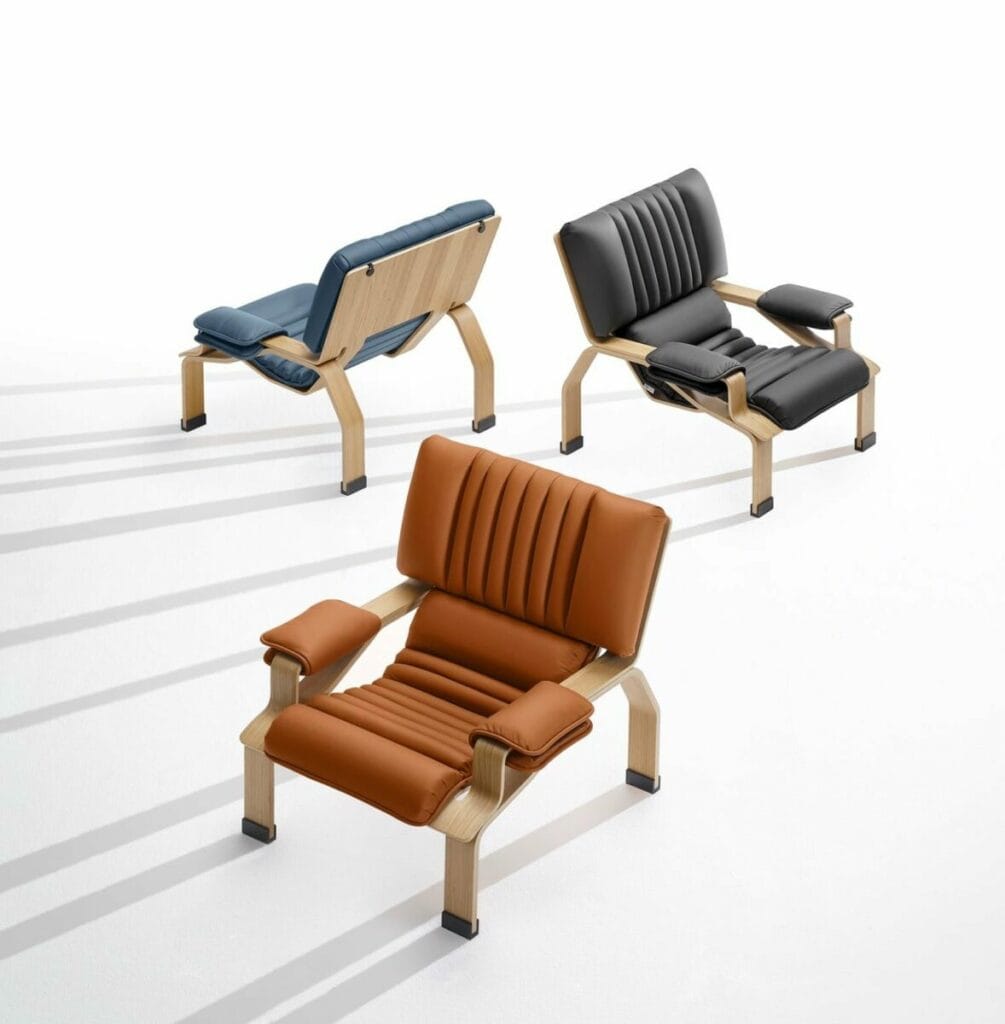
Chair 4867 (1967)
The 4867 chair is the first stacking chair molded in a single block by plastic injection. Its simple, lightweight and sturdy design has made it a benchmark for contemporary interiors and public spaces. The opening in the backrest makes it easy to hold, and its shape allows it to be hung from the side for optimized storage.
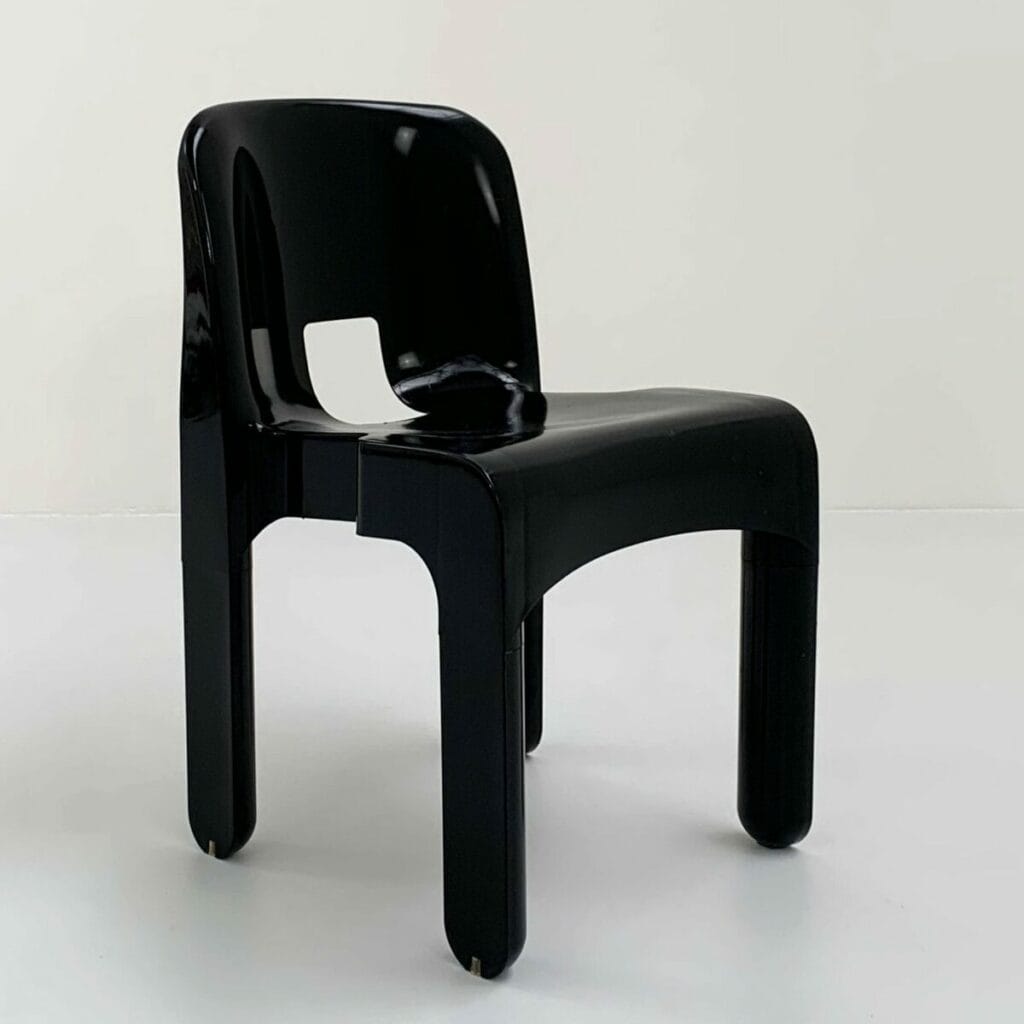
Additional Living System (1967)
This modular seating system is made up of six elements that the user can assemble ad infinitum. It’s an “open” seating system, based on interaction and reconfiguration. A form of participatory design before its time.
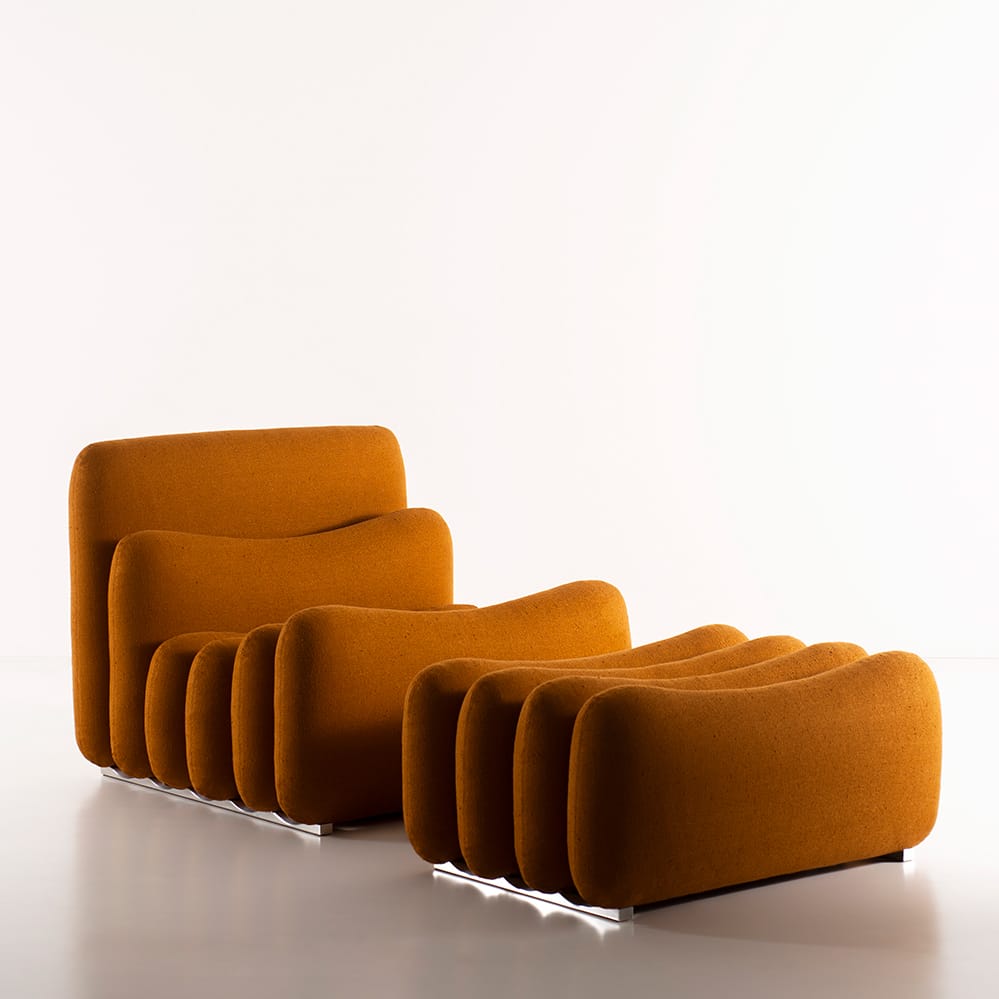
Tube Chair (1969)
Composed of four foam-covered PVC tubes, the Tube Chair is supplied disassembled. Each element can be assembled with straps to create an armchair with multiple configurations. It’s an archetype of radical ’60s design: simple, playful, free, visionary.
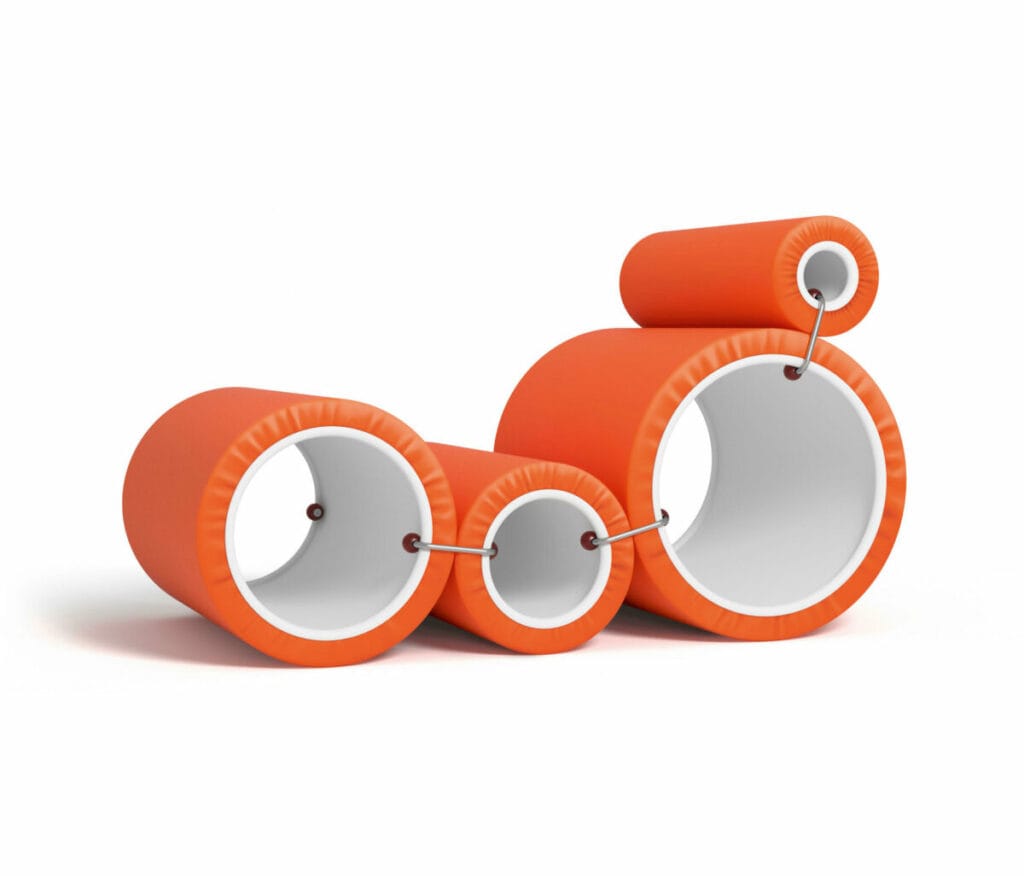
Living Center (1970)
Colombo’s last major project before his death, the Living Center (for Rosenthal) offers a modular living space incorporating rollaway beds, storage and a convertible central unit (bar, desk, table). It epitomizes his vision of intelligent, adaptable housing, ahead of its time.
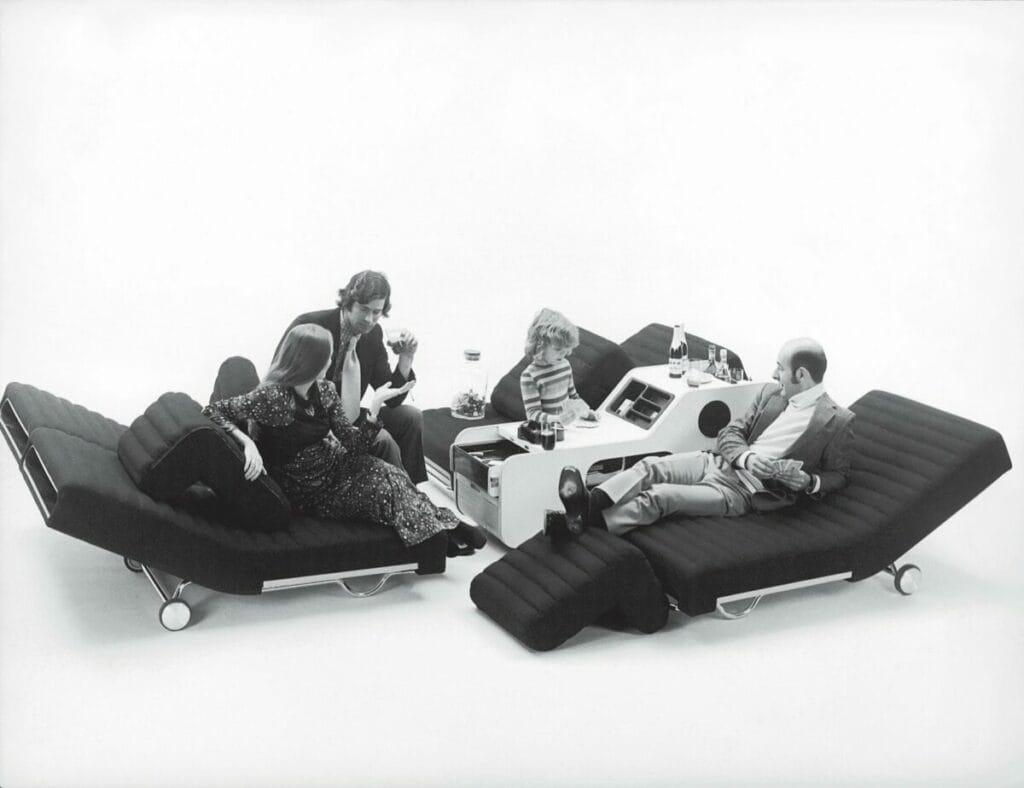
A living legacy
Joe Colombo has collaborated with major publishing houses such as KartellZanotta, Bieffeplast, Sormani, Comfort and O Luce. He has received numerous awards, including the prestigious Compasso d’Oro and the Premier Design International Award.
His work continues to inspire architects, scenographers and designers, particularly in the fields of compact design, nomadic furniture andmodular interior architecture. He is one of the rare designers to have envisaged the home not as a collection of objects, but as a fluid, intelligent ecosystem.

Digital entrepreneur and craft artisan, I use my unconventional background to share my vision of luxury design and interior decoration — one enriched by craftsmanship, history, and contemporary creation. Since 2012, I have been working daily in my workshop on the shores of Lake Annecy, creating bespoke interiors for discerning decorators and private clients.

